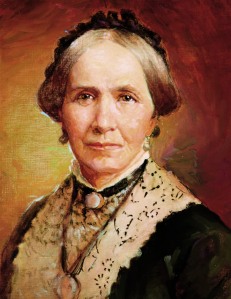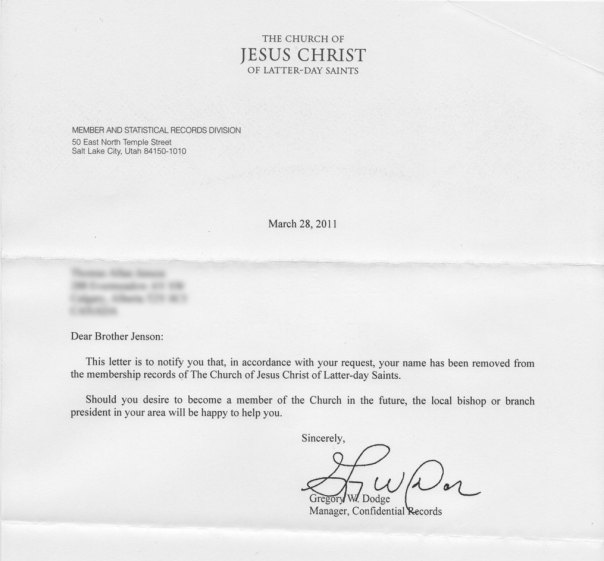Blog Archives
The 2011 Brodie Awards!
The 2011 Brodie Award nominations are in, and I’m in two categories! If you have enjoyed reading my blog, you can vote for me in the following two categories:
Best New Blog: Progressive ExMormon
Most Poignant Personal Story: “Life After Death”
The third annual Brodie Awards are to highlight excellent work from all over the LDS-interest internet (both critical and apologetic views). The awards are named after Fawn M. Brodie, who authored one of the first comprehensive (and critical) biography on Joseph Smith entitled, “No Man Knows My History”.
—————-
UPDATE:
Unfortunately, I didn’t win the Brodie Award in either category, but would like to congratulate all those who won. You can click here to see the list of the winners.
Review: Tell it All, A Woman’s Life in Polygamy

Tell it All: A Woman’s Life in Polygamy by Fanny Stenhouse
My rating: 5 of 5 stars
Tell It All is the heartbreaking autobiography of Fanny Stenhouse. Her story begins with her as a young woman returning home to England, after spending some time in France, to discover that her family had converted to the Church of Jesus Christ of Latter-day Saints. While investigating her family’s new-found faith, she became the object of one of the Elders’ affections. They were soon married and subsequently ‘counseled’ to serve a mission for the Church while in impoverished conditions. It was only after years of whispered rumours (and public denials by apostles) of polygamy being practiced among their American counterparts, that Joseph Smith’s polygamic ‘revelation’ was finally disclosed in England. Her adventures only truly began when she and her husband were later ‘counseled’ to emigrate to the ‘promised land’ of Utah, where she learned, first-hand, the detrimental effects of Brigham Young’s institutionalized polygamy.
My Contribution to Exposing The Mormon Delusion
A few weeks ago, while I was reading Jim Whitefield’s The Mormon Delusion Vol 1, I double-checked a claim that the author had made regarding the Church’s official website. On pages 132-3 of TMDv1 (2011 PDF edition), Whitefield had noted that, in 2006, the Church’s biographical sketch of Zina D. H. Young grossly misrepresented history and established facts. After Whitefield had pointed out the ‘error’, the Church deleted the offending sentence – which Whitefield notes in the updated edition (I read the latest 3rd edition).
I wanted to check for myself what the current wording of the biographical sketch was, so I did a quick google search of Zina Young site:LDS.org. Sure enough, I quickly found the revised bio, just as Whitefield said. However, in the search results, I also found a link to a Relief Society Presidents poster which still contained the original biographical sketch! There I had it, proof that the LDS Church had not only rewritten history to mislead people, but that they had deleted the misrepresentation once it was discovered!
Once I realized that I had clear before-and-after copies of the Church’s official biographical sketch of Zina D. H. Young, I contacted Jim Whitefield to let him know.
Below is Jim Whitefield’s official September 2011 update containing my contribution. Click here for the original source.
The Family (via The Blissful Heretic)
I recently came across a blog post called “The Family“, by The Blissful Heretic. I thought it was really well written, and successfully illustrates the contradiction that exists with the LDS Church’s marketing strategy of promoting themselves as a ‘family church’, while actively preaching against any and all family types that don’t fit it’s patriarchal, heterosexual, and procreational ideal.
I highly recommend my readers to follow the link below to read her great post. Here’s a sample:
In recent years, the church has been trying to enhance its image as a “family” church. It has always been adamantly opposed to homosexuality and gay marriage, and it has received a lot of press for this since its involvement in Prop 8. Nary a conference goes by without a veiled reference to “the family” being under attack. The current threat is the gay rights movement, but historically the church has also identified feminism and interracial marriage as threats to the family. READ MORE…
Understanding Atheism
 I’ve decided to expand on my previous post entitled, “Atheism vs Agnosticism” where I explored the different ways of thinking about atheism. The reason for this is because since writing that post, I’ve further explored what atheism means to others and have done a lot of reading on the subject. Some of the books I’ve read are: God is Not Great: How Religion Poisons Everything by Christopher Hitchens, The God Delusion by Richard Dawkins, The End of Faith: Religion, Terror, and the Future of Reason, Letter to a Christian Nation, and An Atheist Manifesto by Sam Harris – all of which I highly recommend. In addition to these books, I’ve come across a wealth of information on various websites and especially YouTube.
I’ve decided to expand on my previous post entitled, “Atheism vs Agnosticism” where I explored the different ways of thinking about atheism. The reason for this is because since writing that post, I’ve further explored what atheism means to others and have done a lot of reading on the subject. Some of the books I’ve read are: God is Not Great: How Religion Poisons Everything by Christopher Hitchens, The God Delusion by Richard Dawkins, The End of Faith: Religion, Terror, and the Future of Reason, Letter to a Christian Nation, and An Atheist Manifesto by Sam Harris – all of which I highly recommend. In addition to these books, I’ve come across a wealth of information on various websites and especially YouTube.
As my original post talked about, there are a number of ways to define the terms ‘atheist’ and ‘agnostic’. My exploration of these terms were on a more passive level, that is to say I didn’t apply an active component to the definitions; the words were simply defined as what they mean separate from how they’re used. I’d say that most atheists, like myself, use a strict definition where ‘a-theist’ means, “not theist” (just as ‘atypical’ means “not typical”), and opposed to “a disbelief in a god” (since this would indicate a type of belief itself). I tend to like this definition for its simplicity. However, I’ve noticed that most theists (meaning ‘religious believers’) tend to view the term as having much more intent behind the term, such as “against religion”, “god hater”, or “anarchist” (the last two making absolutely no relevant sense). There are many atheists out there who either don’t subscribe to the label (though fit my definition) or don’t actively oppose religion at all, while others are in active opposition to specific theistic beliefs or all of theism. It’s important to remember that atheism is not an ideology, nor is it a religion unto itself as some people like to think.
Adolf Hitler & The Plan of Salvation
Today is the 66th anniversary of Adolf Hitler’s death, and it got me thinking about how LDS theology views Hitler in its plan of salvation.
We are all well aware of the horrific monstrosities that were perpetrated by Hitler when he became the fascist leader of Nazi Germany during WWII, as well as his role in the events of the holocaust. To me, such a person as Hitler is beyond redemption or forgiveness. There is no evidence that, if given a chance, he would have changed his ways during his lifetime had he not completed suicide. But what of his next life?

The Plan of Salvation
Response From the Church, part 4 (final)
Well, it finally arrived (only 10 weeks from when I sent in my resignation letter)! I’m officially an apostate!
It’s interesting to note that my wife wasn’t included in this letter. I wonder if hers is being sent separately or if they forgot about her? I’ll have to look into that.
Church Finance (via Truth Hurts)
The following is an extremely well researched four-part posting by Truth Hurts (who’s an active member of the Church, yet highly critical – a paradox that I can’t quite yet grasp) on the topic of Church finance. As I’ve noticed for quite a while now, the Church is much more a business corporation (with tax-excempt status) than it is a religious organization set on saving souls.
It’s a long read, with a few tangent thoughts sprinkled throughout, but it makes for a very interesting and informative (and well-documented) read. Here are the links to all four parts (I found parts 1 & 3 to be the most interesting):
via Truth Hurts
Rape Apology and Joseph Smith (via Molly Muses . . .)
It always amazes me how Mormons can turn a blind eye to their founder’s sexual “transgressions” (aka. rape) while then taking the stance that all sexual sin is second only to murder (as per Boyd K. Packer’s April 2011 talk, “Guided by the Holy Spirit“) Although I plan to address this topic in greater detail in the future, I thought I’d pass along this blog post by Molly Muses, who has worded things better that I could have done.



















